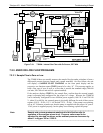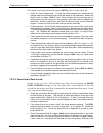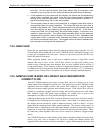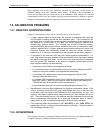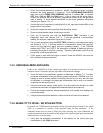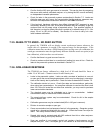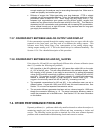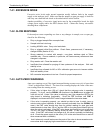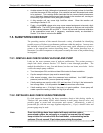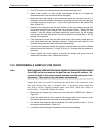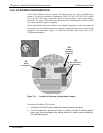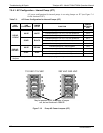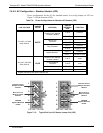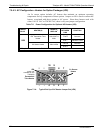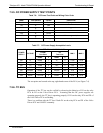
Troubleshooting & Repair Teledyne API - Model T200H/T200M Operation Manual
238
7.4.1. EXCESSIVE NOISE
Excessive noise levels under normal operation usually indicate leaks in the sample
supply or the analyzer itself. Make sure that the sample or span gas supply is leak-free
and carry out a detailed leak check as described earlier in this Section.
Another possibility of excessive signal noise may be the preamplifier board, the high
voltage power supply and/or the PMT detector itself. Contact the factory on trouble-
shooting these components.
7.4.2. SLOW RESPONSE
If the analyzer starts responding too slow to any changes in sample, zero or span gas,
check for the following:
Dirty or plugged sample filter or sample lines.
Sample inlet line is too long.
Leaking NO/NO
X
valve. Carry out a leak check.
Dirty or plugged critical flow orifices. Check flows, pressures and, if necessary,
change orifices (Section 6.3.6).
Wrong materials in contact with sample - use glass, stainless steel or Teflon
materials only. Porous materials, in particular, will cause memory effects and slow
changes in response.
Dirty reaction cell. Clean the reaction cell.
Insufficient time allowed for purging of lines upstream of the analyzer. Wait until
stability is low.
Insufficient time allowed for NO or NO
2
calibration gas source to become stable.
Wait until stability is low.
NO
2
converter temperature is too low. Check for proper temperature.
7.4.3. AUTO ZERO WARNINGS
Auto-zero warnings occur if the signal measured during an auto-zero cycle is lower than
–20 mV or higher than 200 mV. The Auto-Zero warning displays the value of the auto-
zero reading when the warning occurs.
If this value is higher than 150 mV, check that the auto-zero valve is operating
properly. To do so, use the SIGNAL I/O functions in the DIAG menu to toggle the
valve on and off. Listen if the valve is switching, see if the respective LED on the
relay board is indicating functionality. Scroll the TST functions until PMT is
displayed and observe the PMT value change between the two valve states.
If the valve is operating properly, you should be able to hear it switch (once a
minute under normal operation or when manually activated from the SIGNAL I/O
menu), the PMT value should drop from its nominal reading for span gas level
measurements to less than 150 mV and the LED on the relay board should light up
when the valve is activated. If the PMT value drops significantly but not to less than
150 mV, the valve is probably leaking across its ports. In this case, replace the
valve. If the PMT value does not change at all, the valve is probably not switching
at all. Check the power supply to the valve (12 V to the valve should turn on and off
when measured with a voltmeter).
that it takes only a small leak across the ports of the valve to show excessive auto-
zero values when supplying high concentrations of span gas.
07270B DCN6512




